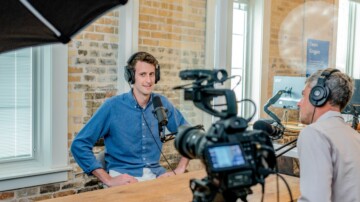Let the Donor Decide: Don’t Assume Giving is Off the Table During a Crisis

“Humanitarian crises, natural disasters, disease outbreaks – the needs today as pressing as ever,” stated Martha C. White in a TIME Magazine article in 2018. At that time, COVID-19 was not on the tip of everyone’s tongue.
She reflected that the way we give is evolving impacted by tax law and technology along with changing consciousness and shifting social mores. Today we add economic challenges as well.
In conversations this week with several healthcare foundation CEOs, I heard vastly different stories: one is moving forward with a $1 billion campaign in which they have already raised $600M and they plan to keep going. Another released a plea for the community to make and donate face masks for clinical staff. Another is using this time to build the foundation’s infrastructure to launch the largest campaign ever held in their region.
I suspect that those considered most vulnerable both to a financial hit to their nest eggs as well as most fearful of the virus are those over the age of 55, also known as Baby Boomers. According to The Next Generation of American Healthcare Giving Report, these are the most generous of the generations to all nonprofits and specifically to healthcare. For those who are retired and quarantined, the hours are likely long. So now is the time to talk with them.
Every community will want their hospital to have respirators, good telemedicine and yes, for heavens sake, face masks! Let’s not make giving decisions for the donor. Let them decide.
Here are six tips for dealing with the impact of the COVID-19 pandemic with your donors:
- Build an authentic story.
You don’t need this story to run a campaign. You need it to share how the hospital is handling the crisis. Boomer donors want to be affiliated with those they admire. Give them reason to do that.
- Select the top 25 donors for each gift officer.
Segment the principle, major, and annual gift officers’ portfolio. Each gift officer on the team should start with no more than 25 current donors with whom to work virtually over the next six months. The segmentation should fit the gift capacity, just like always. But now, plan a minimum of six conversations with each. Start with the first conversation (remember the discovery call?) and each officer will build a plan of communication from there. During this call, the gift officer can share their mobile phone number and suggest donors call if they need anything or just want to talk. The remainder of your donor list can have virtual communications plan.
Get tips for communicating with donors during uncertain times.
- Have your technology ready.
Face-to-face visits are off for the foreseeable future. Boomers are using technology and social media. Just one look at your old Facebook account will show the feed is full of grandchildren, trips and more (at least it was). Fidelity Charitable’s The Future of Philanthropy Report states that 27% of donors say their approach to giving has changed due to technological advances that provide convenient tools for funding and communicating with nonprofits they support. Open FaceTime, grab a cup of coffee in comfortable chair and have a conversation!
- Be completely transparent.
Now more than ever, a donor must be confident that if they give to you, they will see the result you agreed upon. Forty-one percent of donors have changed their giving due to increased knowledge about the nonprofit’s effectiveness. Be prepared to be specific and tangible.
- Uncover what your donor cares about.
In the Fidelity Charitable report, Boomers state that the top three challenges they care about are hunger and access to nutritious food (42%), developing treatment or cures for a disease (40%) and access to basic health services (33%). The percentages from Fidelity Charitable are all high net worth donors so very pertinent to healthcare and philanthropy.
See other ways to target specific donor personas.
- Understand what motivates Boomer donors.
On the whole, donors are almost as likely to say they give because of an intrinsic motivator, such as values or peace of mind, as they are to donate for an external reason, such as making a difference or because there is a great need. During this time, less emphasis should be on acquisition. All attention should be on retention. To that end, 49% say giving is part of my values or my family’s values. Another reason to focus on donors you know now.
In summary, please don’t make the decision for the donor, ever. Your communications must be authentic and caring. However, everyone needs to hear someone optimistic. Not pie in the sky giddy, but thinking forward. Be armed with meaningful potentials for funding if your donor seems open to that. If they are not, be a good friend during a time of hardship. Conversations with friends are so important now.


